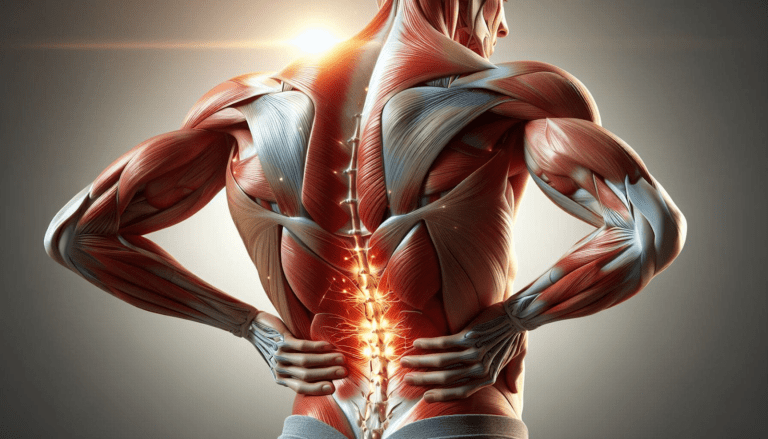Neuromodulation for Back Pain

Kevin Fisher, 27, has survived two car accidents. The first one, in 2005, resulted in bulging disks and back pain. Medicine helped keep the pain at bay. The second accident, in 2010, was far more serious. Fisher swerved to avoid an oncoming car when he felt the full impact of the collision on the driver’s side. This time, the pain was chronic, almost unbearable, and changed the course of his life.
Because of the pain, Fisher was forced to leave nursing school and move with his 8-year-old son, Blake, to live with his mom and dad in San Diego. He credits his parents for their support and his pain management specialist, Michael Huntley, MD, for trying everything (injections, epidurals and even Botox in his back) to relieve the pain. Nothing worked until he experienced relief from spinal cord stimulation last September.
Fisher wanted to be independent and an active parent again. “I wanted to get off all that medication,” he says. The physical pain was enough to endure, but he found the psychological pain just as tough. “There were people who thought, ‘This kid’s a pill seeker.’ That’s the label I carried. It really hurts. Quite a few times, I wanted to give up.”
Fisher knew to ask his doctor about spinal cord stimulation (SCS) because years earlier his mother had the procedure and experienced relief. Also known as neuromodulation, SCS delivers electrical impulses directly to a targeted area or areas to block pain signals, a treatment that has effectively managed chronic pain for more than 40 years.
REACH FOR THE REMOTE
There are a variety of spinal cord stimulators with various advantages. The one Fisher and his physician selected was the FDA-approved Precision Spectra™ system. By stimulating specific nerves in the cord, SCS replaces a painful sensation with a smooth, vibrating sensation that most people prefer to pain. Physicians can select a variety of combinations and energy levels to produce the best vibration therapy.
Spectra’s ability to precisely target pain while helping avoid unwanted, irritating stimulation is a new technology that makes it different from other SCS devices. While older systems only allow for 16stimulation contact points, Spectra offers up to 32, giving physicians more flexibility to treat multiple areas of pain. Spectra also can test literally thousands of contact combinations in minutes, a process that would require hours to days with less sophisticated systems. The more possible combinations, the better the possible outcome.
A cordless, cell phone-sized remote control allows Fisher to adjust the amount of stimulation. His doctor programmed five combinations: one for his back and legs, another for his feet, and so on. Depending on his pain level and daily activity, he chooses the program he needs.
Fisher describes the sensation as “somewhere between a massage and a tickle.” Because the Spectra system is completely cordless, it can be recharged in an hour or two by placing a cordless external charger over the Internal Pulse Generator, or battery, using a belt or adhesive patch. Without the need to be “plugged in,” one can remain mobile while recharging.
HOW IMPLANTS WORK, AND CHANGE LIVES
To implant a spinal cord stimulator, a physician precisely places groupings of thin wires called leads in an area called the epidural space, above the spinal cord, and connects them by a cable to an implantable pulse generator (IPG). A low-energy electrical current goes from the generator to the nerve and either inhibits pain signals or stimulates nerve impulses where there were none.
Fisher, like almost every recipient, had a required trial run before fully committing to the implant, which allowed him to “test drive” the system. Unlike more permanent and invasive procedures, the stimulator is reversible. Fisher’s leads were placed during an out patient procedure. He lived with them for a week and felt so much relief that he told his doctor, “Let’s do this.”
Fisher warns that the trial involves two leads — about the size of angel hair pasta, he says — “hanging out of your back where the needle was placed.” It’s a little uncomfortable, which is why doctors don’t want people to live with the simulator for more than a week or two. But, Fisher says, it helped him mentally prepare for what the permanent SCS would feel like.
After a week with the trial stimulator, he was ready for surgery and booked the first available appointment. Fisher says his activity was limited for about two months after the implant. “There’s no bending or twisting of your torso,” he says. “It was pretty difficult.” But even the recovery was better than living with the pain and the drug regimen.
Fisher says his mom, dad and son kept him going. Now, he is slowly rebuilding his life. He recently re-turned from an overnight fishing trip with a friend— something he’d never have been able to do before SCS. He hopes to be able to make a living using his love of fishing, hunting and the outdoors. {PP}
PainPathways Magazine
PainPathways is the first, only and ultimate pain magazine. First published in spring 2008, PainPathways is the culmination of the vision of Richard L. Rauck, MD, to provide a shared resource for people living with and caring for others in pain. This quarterly resource not only provides in-depth information on current treatments, therapies and research studies but also connects people who live with pain, both personally and professionally.
View All By PainPathways






